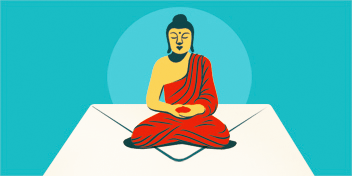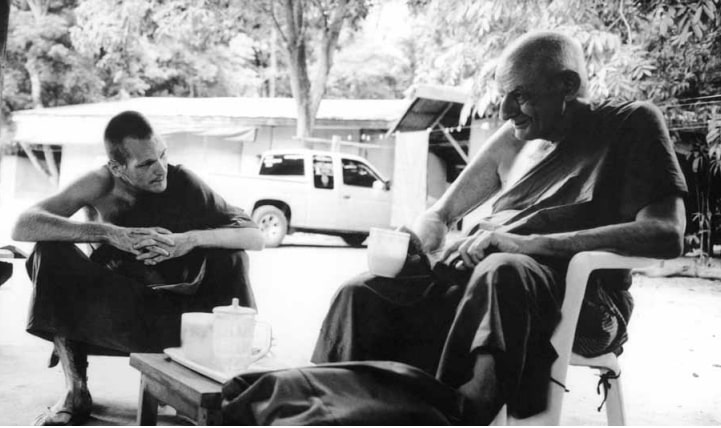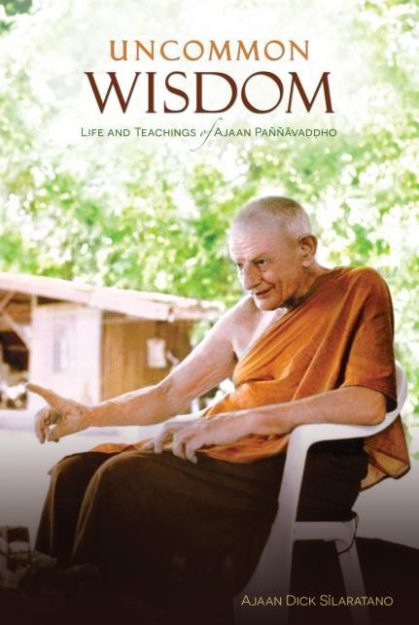When we were very young and still trying to make sense of the world around us, our minds struggled to absorb all the diverse information that they received through the five senses and to organize it in such a way that we could retain it for future use. We gradually learned to lump similar sorts of things into categories under headings for easy access. Eventually, these general categories began to represent an array of variations on a common theme, referred to by a certain name or word.
Symbolizing is a way of simplifying. For the most part, it’s necessary for the mind to simplify the great variety of incoming sense data. Mental symbols are nature’s way to store an enormous amount of information, knowledge, and understanding within a very limited mind capacity. In other words, creating symbols facilitates the task of dealing with a lot of complex information.
When we group a large amount of information under one symbol, like “tree,” we can then deal with just that symbol without the need to consider the totality or the complexity of what it represents. We have a name for it and that’s enough. The complexity can be devilish, but if we can name the devil, we have defeated him. In other words, we have been able to grab a hold of him in some meaningful way.
Any object of consciousness is made up of bits and pieces, called sankharas, that act like pixels on a screen. We don’t see the individual pixels; instead, what we see is a mental object distinct from its background. But the object that we distinguish in this way is, in fact, just a symbol representing the complexity of all the bits and pieces that comprise it. We use such symbols all the time; our minds are absolutely riddled with them. They are part of the fundamental way we think. We have to use symbols for thinking because the complexity of phenomena is so vast that the mind just isn’t capable of holding it all at once. So we focus on certain prominent aspects of every experience and turn those into symbols representing the whole.
But these objects are more than just visual images in our lives. They also have a certain emotional impact on us, often associated with the experiences we had in relation to them. Sometimes the experience was positive, sometimes negative and sometimes neutral. In whichever case, our future perceptions are then colored by an emotional overlay as well.
Creating symbols is essential because it frees memory to be used in all sorts of other ways. Otherwise, if we had to remember everything, our brains would have to be enormous to hold it all. But there is also a fundamental disadvantage to mental symbolizing, because, in the end, we tend to deal only with the symbols and not with the reality. As a matter of fact, we begin to give the symbols a reality that they don’t possess. This can very easily be a cause for more delusion.
For instance, we take something very complex, like another person, and give that person a name. Our notion of that person revolves around the emotional reaction their name tends to evoke. That notion is a very static view of another human being. In truth, the reality of human beings is very complex. We have a general idea of the people we know, but that idea doesn’t take into account the changes that are constantly taking place inside them.
We have symbols for everything, including our emotional states. When a particular emotional state comes up, we recognize it because we remember it under a certain symbolic heading. It’s hard to define these internal symbols. Often they are just feelings, but we know them quite distinctly. That is, we know what the feelings symbolize to us. But that doesn’t mean that we know their reality. We often think we understand something, when in truth, instead of catching hold of what’s really happening, we’ve merely caught hold of a symbolic representation of it.
What actually happens is invariably quite complex. What’s really happening is more like a whirlpool, a whirlpool of constant change. If we try to resist change and remain static, we will miss the truth every time. If we can just watch it closely, we will see that everything is part of this whirlpool of changing phenomena. So we let it follow its natural tendency.
If we try to resist change and remain static, we will miss the truth every time.
We should try to be aware that there is a vortex of activity occurring in and around us all the time. We experience this, but because our minds are not quick enough to catch up with the constant arising and ceasing of phenomena, we have to reduce the whole lot to something simple enough for our minds to latch on to. Thus we create a symbol.
The symbols in our minds change and adapt according to circumstances. We have a range of symbols that can adapt to fit different situations. Part of the symbol is the form, part of it is the use, and part of it is the location. Symbols go even further by isolating an object and separating it from the whole of its background. For instance, we identify one tree out of a whole forest. Why do we identify that one particular object as the tree and the rest as the forest? It’s just our way of grasping the situation in terms of cause and effect.
The same principle applies to internal objects, like emotions. We try to get a handle on them by giving them a name. By that token, we think we understand them. But it is important to realize that the naming and labeling of such things does not truly represent their reality. Internal phenomena like emotional states must be carefully observed. We should always be willing to question them within ourselves. We mustn’t simply dismiss them by saying: “That’s hatred. That’s greed.” We must look at them as they occur inside. Look at those mental states just the way they are, regardless of what we call them. Try to understand their real nature apart from the name.
We should look at the symbols in our minds and try to understand how they distort reality. Being mere symbols, they do not represent the truth. Therefore, they are, in a sense, false. By investigating the symbols, we come to realize that we have views about those mental constructs which we are very attached to.
The symbols we accumulate to structure the world around us are bound up with the faculty of memory. Memory is a database of all our previous experiences that runs like a continuous thread through the pattern of our mental activity. The data from memory comes in through the five senses; it’s the senses that tell us what to remember.
An enormous amount of our thinking is based on memory. When we see or hear something, we identify it by comparing it to remembered impressions. Our present experience may be associated with external sensations, but those sensations have to be identified and interpreted in the light of past sensations. Once we recognize a particular sensation, we think about it, which again relies on the faculty of memory. For that reason, memory is an essential part of all of our perceptions.
Memory references the past. Because of that, memory itself is the basis of our concept of time. The time that we know is the past. We don’t know the future; we predict that. We only predict the future on the basis of what’s happened in the past. And we can access the remembered past only by reflecting on it in the present. So we can say that memory is at the center of our views on time.
We rely on the past for a sense of security in a changing world. We become very attached to what we remember because it gives a sense of continuity to our lives. It’s as though, if we can remember something, it still somehow exists. Although we can’t actually go back in time, there is comfort in recalling the memory of it. Memories easily become a refuge from the uncertainty of impermanence. But such a refuge is based on neither truth nor stability. We have to accept that nothing is permanent, that everything is constantly changing from one moment to the next, and therefore, we should not be deceived into thinking that our memories contain anything in which we can put our trust.
Memories easily become a refuge from the uncertainty of impermanence. But such a refuge is based on neither truth nor stability.
Instead of getting caught up in the content of our memories, we should examine the nature of the faculty of memory itself to understand how the process works. Memory is made up of an alphabet soup of images, concepts, and symbols that compare incoming sense data with past experience in an attempt to “recognize” where it belongs in the inner world of known perceptions. In other words, memory matches present perceptions to past experiences and labels them accordingly. We recognize a tree because we have the characteristics of a generic tree stored in our memory. This, in turn, is based on a commonly shared interpretation of what that particular form represents. But the designation “tree” is merely a symbolic substitute for reality, not the reality itself. We suppose that by naming it, we understand what it is. But the reality is quite different from the name.
When it comes to discussing a topic like meditation, difficulties in communication are bound to arise because we all have our own ideas and our own unique inner experiences. In using language to convey our meaning, we have to turn those concepts into spoken words. Words are sounds that others pick up and turn into meaningful concepts inside themselves. They take the spoken sound, the word, and refer it to memory to find out their own understanding of it. That understanding depends largely on the listener’s background. Even with a similar background in Buddhist practice, we can never be sure that any two people will understand a word in the same way.
Language is necessary for communication, but it is also a minefield for misunderstanding. It’s useful to study how language works, how it conveys meaning. Basically, language is a symbolic process. When we think of an object, we are reminded of the word for that object, which has specific connotations attached to it. But the connotations for the same word may differ between the speaker and the listener, which easily causes misinterpretations to arise. The same word, the same symbol, conveys different shades of meaning to different people.
When speaking about physical objects in the world, like trees, the differences are unlikely to be a problem. We can point to a tree. But when it comes to concepts like virtue or concentration or wisdom, there’s nothing concrete that we can point to. Because of that, it is very easy for people with limited genuine experience in these matters to misunderstand the meaning of these concepts. Because they’ve never seen virtue, concentration, and wisdom as objects, most people are bound to develop wrong views about them.
When a student is unfamiliar with the terminology, the teacher must carefully explain the path of practice, step by step, and gradually build up an understanding of the basic concepts involved. However, only someone who has really mastered the practice and knows what he’s talking about can teach like that. Otherwise, the teacher will be left to explain the practice according to what has been handed down in the Buddhist texts. Because of a lack of profound personal insight into the dhamma, the teacher is using concepts that he does not fully understand himself, which easily causes misunderstanding to arise in his students as well.
When practicing on one’s own without a teacher, the Buddhist texts can be a useful reference. But we should not depend on them too much. Following the texts as a guide to meditation has its drawbacks because our inexperienced minds are not equipped to unravel their deeper meaning. So we should use the technical terms in the books with caution, as it is very easy to misinterpret their intended meaning.
In the Thai forest tradition, a distinction is made between sanna and panna. Sanna is traditionally translated as “perception.” Although that is not entirely incorrect, the best translation of sanna is “memory.” Panna is best translated as “wisdom.” The difference between the two is similar to the difference between appearance and reality; supposition and truth; or intellectual understanding and direct insight. In other words, sanna is analogous to the intellectual understanding arrived at by thinking; whereas panna is the direct knowing of essential truths.
To give you an example: Thoughts are usually formed in words, which are symbols stored in memory. A thought that comes up in words originates from a nucleus or seed of that thought located deep inside. When you trace the thought process back to that original seed, you will find that the entire idea expressed in that thought is contained in the seed. Thinking attempts to express that idea in a dialogue. But on a fundamental level, the idea behind that thought is complete in the seed. Realizing that, you also realize that you know the fully-formed idea already, so there’s no need to think about it. In fact, thinking about it at length merely dilutes the essence of it and distorts the meaning.
Panna or wisdom is knowing and understanding, but in an active sense, as in the act of knowing or the act of understanding. Although that knowing is usually based on the Buddha’s teaching, it does not rely solely on conceptual interpretations learned beforehand to recognize the truth in meditation experiences. A thorough conceptual understanding of the teaching is useful as a background to wisdom practice, but it should not assert itself as the main player when wisdom’s direct non-conceptual insight is active.
As a spiritual training, wisdom shines a light on the nature of present moment reality in an intensely focused way which allows no time gaps for fact checking with our intellectual understanding. This is the nature of panna: cause-and-effect understanding grounded in the interaction between present moment conditions.
When you start practicing meditation, your mind is out in the world ninety percent of the time. You have accumulated a storehouse of knowledge about the world around you. You have extensive knowledge of the external world, but you know nothing about what goes on inside your own mind. As you learn how to investigate the nature of your mind to see how it works, you come to the conclusion that your view of the world is fundamentally wrong. You realize that the symbols you have accumulated to structure the world around you are false. That realization comes, not from remembered concepts, but from the insights that gradually change your understanding. By using wisdom to analyze and investigate, you will begin to illuminate the true nature of things. The insights that arise from that effort change your overall understanding of dhamma.
Concentrate on the truth of what wisdom reveals and let that truth speak for itself.
As you progress in the practice, you should investigate with wisdom repeatedly until you become skilled in its use. Avoid speculation or conjecture. Don’t allow thoughts of what you should be doing, or what the results might mean, to interfere with your present-moment focus. Just concentrate on the truth of what wisdom reveals and let that truth speak for itself. In this way, you can maintain a proper balance between memory and wisdom as you advance, stage by stage, to the attainment of purity of mind and freedom from suffering.
◆
Excerpted and adapted from Uncommon Wisdom by Ajaan Pannavaddho, translated by Ajaan Dick Silaratano. © 2014 Forest Dhamma Monastery Organization. Reprinted with permission.
Thank you for subscribing to Tricycle! As a nonprofit, we depend on readers like you to keep Buddhist teachings and practices widely available.


